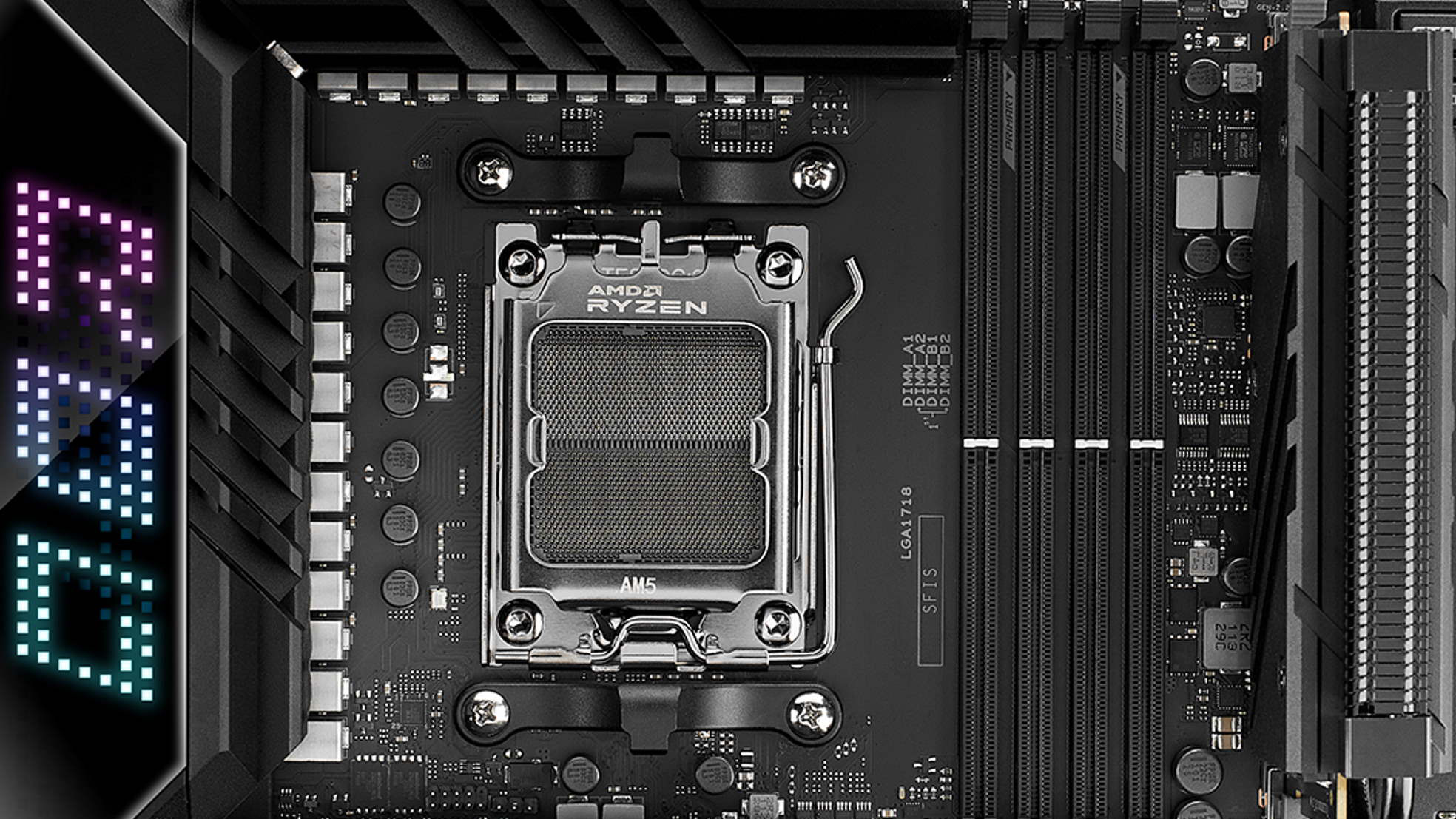
Don't expect performance miracles, though.
AMD AM5 motherboards are set to receive BIOS updates that add support for the latest wave of high-frequency memory modules. MSI is progressively rolling out the update in question right now, with other vendors certain to follow.
The update allows users to run memory in the DDR5-7000+ range. MSI’s press release demonstrates two systems. The first shows a Pro B650-P WIFI running at DDR5-7200, while the second shows an impressive DDR5-8000 on a high end X670E Ace.
The update in question, AGESA PI 1.0.0.7c, introduces some notable tweaks and bug fixes. It will be incorporated into all AM5 platforms, ranging from X670E all the way down to A620. The support for faster memory will be welcomed by some, but you shouldn’t rush out and put money down just yet.
The problem is latency. Games typically prefer low latency over raw megahertz. AMD’s memory subsystem functions best when the memory and memory controller run in a 1:1 ratio. A Ryzen 7000 CPU’s memory controller is usually happy to run up to the 3000MHz range or a bit higher (giving you DDR5-6000 at 1:1), but moving up to DDR5-7000 and higher requires this ratio to be set at 2:1, which means you’ll get a latency hit because of the resulting slower memory controller speed.
According to information provided by AMD to Andreas Schilling of HardwareLuxx, The main tweaks to the BIOS code are an expanded range for the tWR timing, and txDFE / enhanced memory training. The timing of this release is interesting as it’s been almost a year since the launch of the AM5 platform, but perhaps there’s a simple explanation as to why this feature is coming now.
(Image credit: Future)
Best CPU for gaming: The top chips from Intel and AMD.
Best gaming motherboard: The right boards.
Best graphics card: Your perfect pixel-pusher awaits.
Best SSD for gaming: Get into the game ahead of the rest.
DDR5 memory prices have plummeted. DDR5 below 6000MHz will hardly save you any money over a 6000MHz kit, while kits at 6800MHz are barely $20 more. It makes sense to allow users to make use of good value kits, even if they are faster on paper than they are in the real world.
Of course, there are other use cases. As DDR5 prices drop, higher density modules become more attractive. 2x24GB like this G.Skill DDR5-7200 set, or 2x32GB kits are only going to take more market share, and updates that help high-density memory perform better are very much welcome.
Expect a flurry of vendor announcements this week as vendors release BIOS updates for their boards. We’ll be seeing higher frequency EXPO kits too. Again though, unless you’re running apps that take advantage of the higher memory bandwidth, don’t feel as though you need to rush out and buy an ultra fast memory kit.
Having said that, I think it’s time for a new DDR5 memory analysis article. In the meantime, if you’re in the market for a shiny new DDR5 kit, take a look at our best DDR5 RAM for gaming picks.



